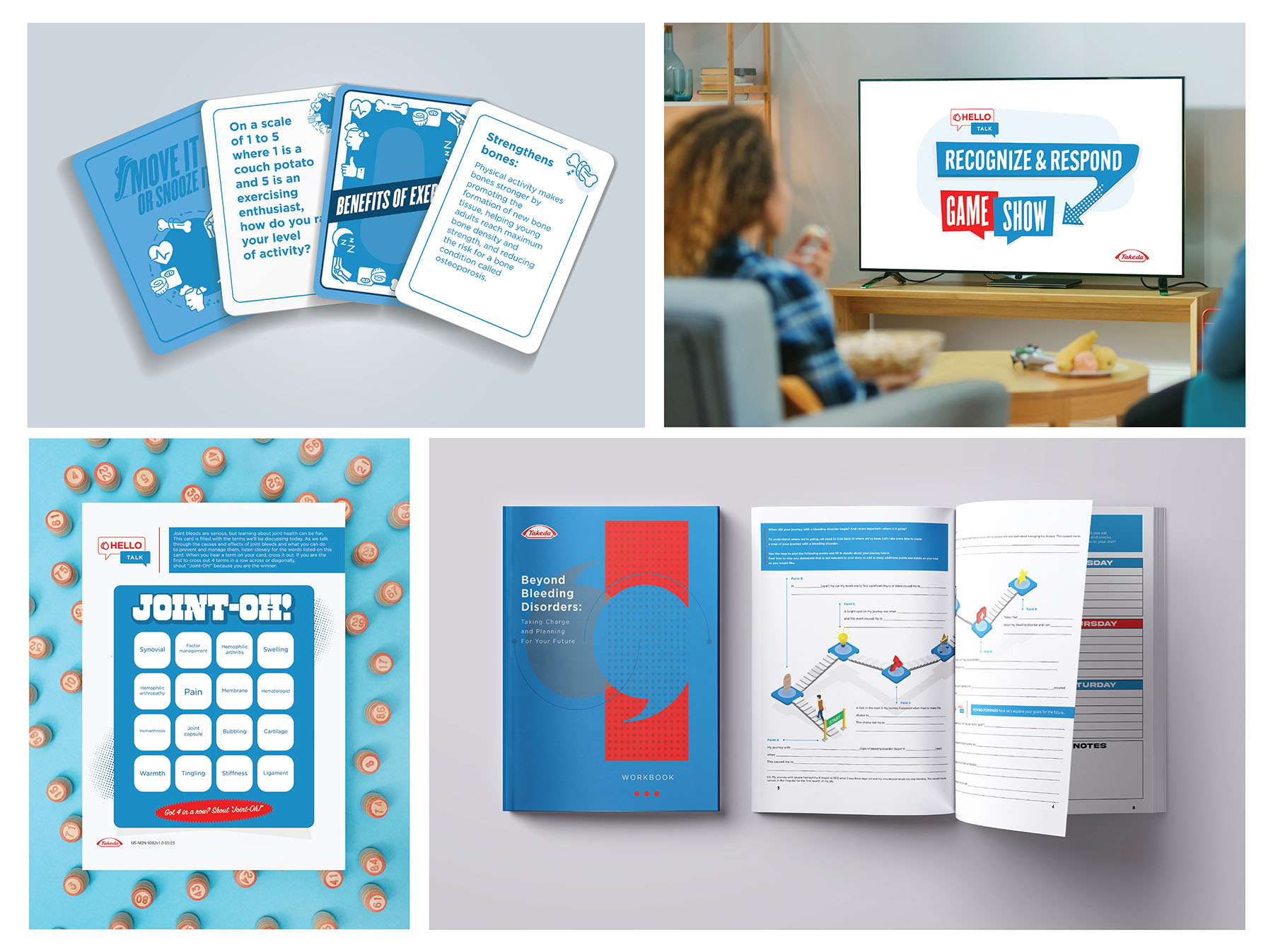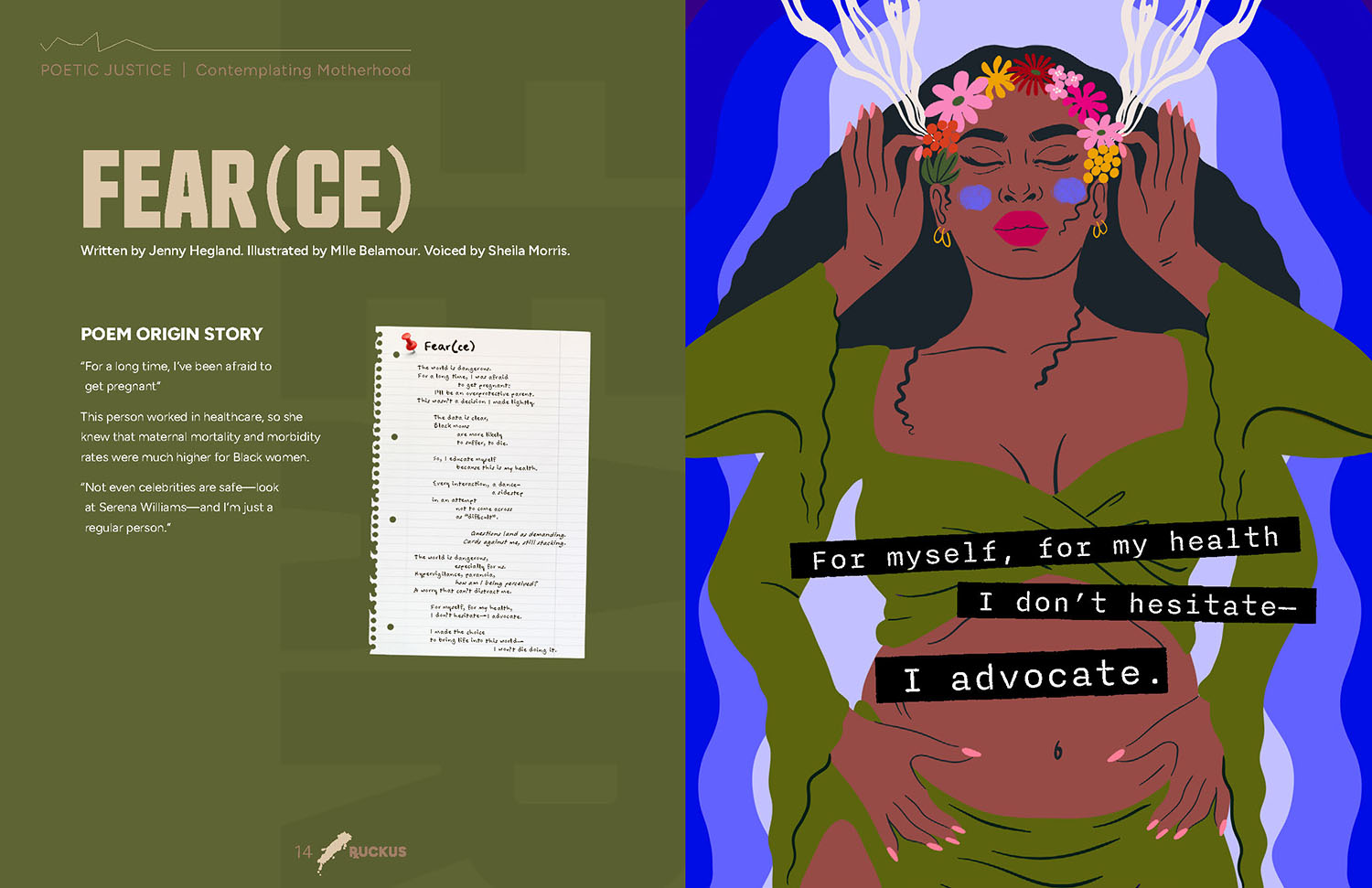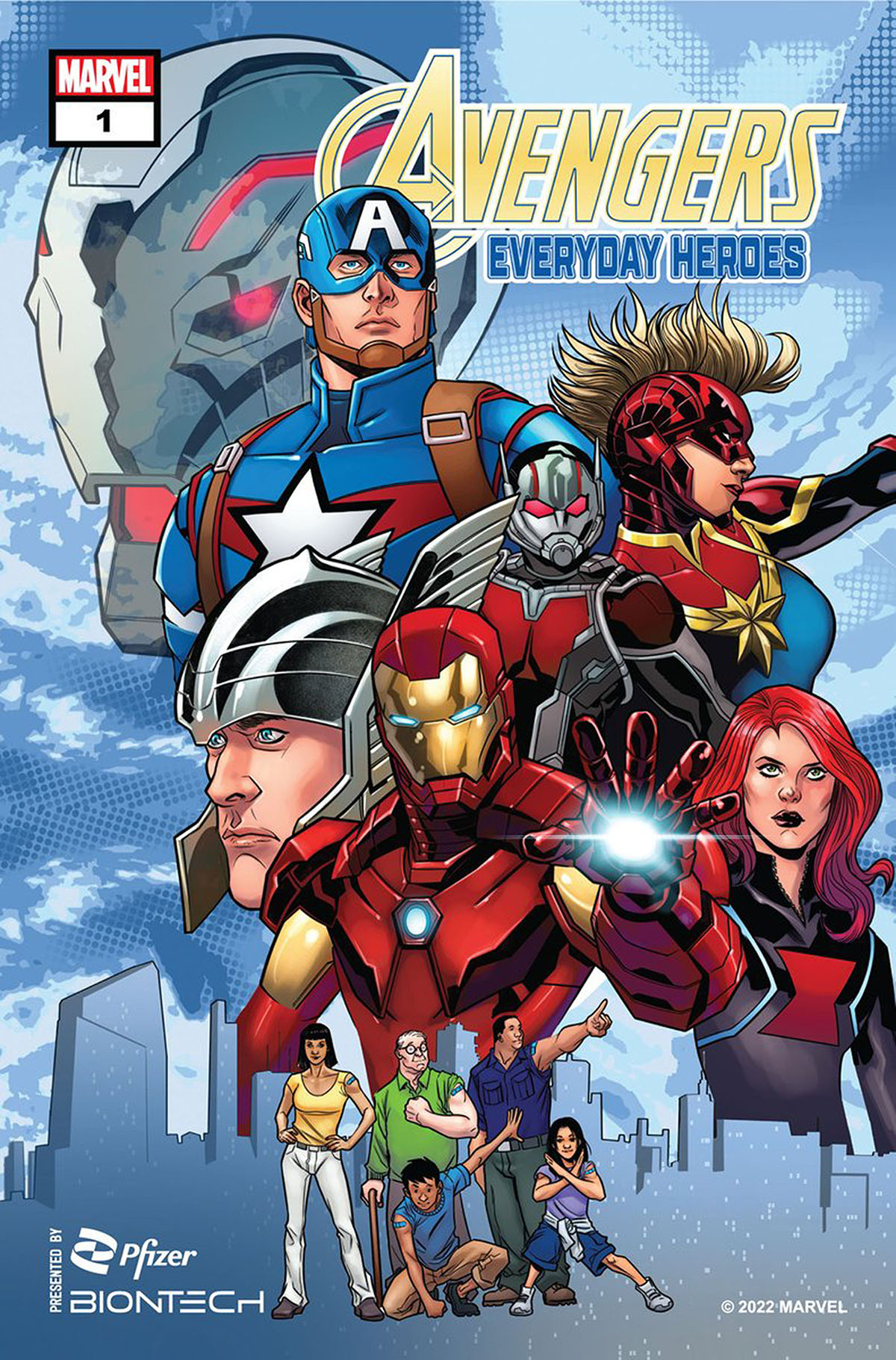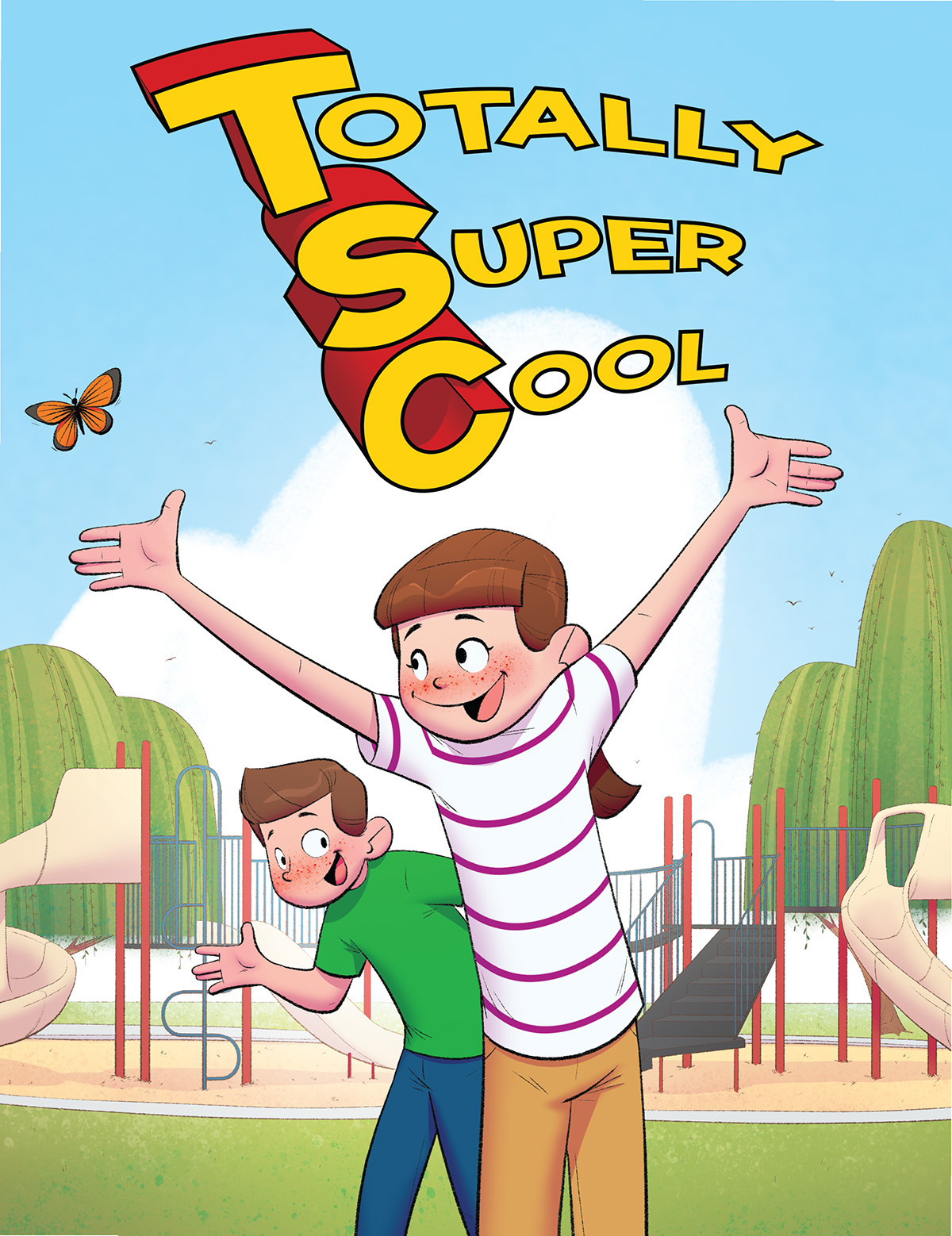The “Kama Sutra” for Parkinson’s patients. A card game designed to help hemophilia patients exercise. A virtual product launch for patients akin to an iPhone debut. Documentaries, children’s books, Marvel comics, and interactive zines. All of these are examples of how companies are taking a little more unconventional approach to patient engagement.
“The notion of radical empathy is something that has guided us when engaging patients,” says Ryan Mason, Chief Marketing and Creative Officer, Fishawack Health. “We have to try to truly understand them not just as a patient, but the whole person and the community that surrounds them. Then, we must allow ourselves to be unconstrained by conventional practice and follow where that empathy leads to help meet their needs.”
Mason learned that lesson while working with argenx to launch VYVGART (efgartigimod alfa-fcab), the first FDA-approved treatment of its kind for adults with anti-AChR antibody positive generalized myasthenia gravis (gMG), a rare autoimmune neuromuscular disease. Argenx turned to closerlook, a Fishawack Health company, to build MG United, a digital platform to help pull the 70,000 people in the U.S. with MG out of the shadows and offer them a resource where they could learn more about their disease and find support. After building up the patient community through MG United, argenx and closerlook arranged several virtual patient gatherings over the next couple of years, eventually leading to the virtual product launch for VYVGART.
A Celebration for Patients
“We were inspired by the energy that large-scale live events bring,” explains Katrina Sergeev Gary, Sr. Director U.S. Marketing and Patient Engagement, argenx. “We wanted to create a way for people to come together and celebrate what a significant milestone this was for the MG community. We went from having no innovation to multiple treatment options now on the horizon, and we understood the hunger patients have for education and accurate information.”
Held in March 2022, “We Rise Together,” achieved 125% of the RSVP goal from the MG community and was later posted to view on-demand. It started off with argenx employees reading letters written by the patient community about their struggles—MG patients no longer able to read bedtime stories to their daughter or dance at their son’s weeding or run their private psychiatry practice.

From there, Keith Woods, COO, argenx, welcomed viewers from a theater in Boston where some of the event was filmed. He kicked things over to the argenx labs in Ghent, Belgium where Peter Ulrichts, Scientific Lead, Neuromuscular Franchise, argenx, explained the science behind VYVGART. Then onto Tuan Vu, MD, Professor of Neurology, Director, Neuromuscular Division, EMG Laboratories, and ALS Clinic, Department of Neurology University of South Florida, who discussed the global clinical trial. Next was a panel featuring three experts and moderated by Sergeev Gary who addressed questions submitted by the patient community. Finally, it ended with a performance of Holberg Suite (1st movement, Allegro Vivace) by the Boston String Ensemble to “literally end on a high note,” as Mason says.
Helping Patients Get Intimate
Empathy was also at the heart of ParkinSex, a kit developed in partnership between the American Parkinson Disease Association (APDA) and Havas Health Plus designed to help deepen intimacy and increase connection between Parkinson’s patients and their partners. Howard Lenn, EVP, Executive Creative Director, Havas Health Plus, said their research found that relationships where one partner has Parkinson’s have some of the highest rates of separation. Yet, doctors focus on treating symptoms and rarely bring up the topic of sexual wellness.
“It’s important to remember people with Parkinson’s are not just about the tremors or the rigidity,” says Rosa Peña, VP, Programs and Services, APDA. “The person living in that body still has needs for connection and intimacy, and feeling that there’s something else to look forward to besides medications and doctor’s visits. Also, over time a partner’s role can change from one of intimacy to a care partner, focused more on managing their partner’s symptoms.”
Havas and the APDA asked patients and their partners for feedback as well as collaborated with clinical sexologist Dr. Sheila Silver. From there, they created the ParkinSex kit, which includes a booklet that guides partners through different intimacy exercises using the included items. For example, a feather stimulates touch; a scented candle provides aromatherapy for those with Parkinson’s who can still smell; a bath bomb relaxes muscles; massage oil and smooth river stones help inspire physical touch; and a blindfold helps reduce inhibitions and self-consciousness. Additionally, the booklet and online video were both designed with inclusivity in mind using gender-ambiguous illustrations and omitting any gender pronouns.
“In addition to creating a kit focused on inclusivity, we also wanted to promote accessibility,” Lenn says. “Considering the motor control issues a person with Parkinson’s might be managing, we put tabs in the booklet to make the pages easy to turn. We also put big pull tags on the little pouches that held the items. Co-creating with people in the Parkinson’s community helped us get it right, and get a big, positive response.”
The original pilot of 65 kits, which were released on Valentine’s Day, were gone within 24 hours. Since then, more than 400 people have signed up for the wait list. Peña says that the APDA is working with vendors and sponsors to produce another approximately 1,000 kits and hope to continue to make more after that.
A Fun Way to Educate
“Patients and their families have access to lots of education, but it can be overwhelming and difficult to capture and retain when it’s delivered like a fire hose,” explains Ben Gaddour, Manager, U.S. Hematology Patient Engagement Marketing, Takeda. “We wanted to make educational content more enjoyable, personalize the experience, and increase the retention of the information that is being facilitated.”
To do so, Takeda partnered with Snow Companies to create Move it or Snooze It!, a card game that helps people learn about the benefits of exercise when dealing with hemophilia, an important topic in the bleeding disorders space since strenuous activity can increase the risk of a bleed. However, the game does not serve as medical advice and patients are still encouraged to ask their doctors what’s appropriate for them.
The game, designed for a group of four to six, consists of 70 cards—30 Activity Cards (including 20 activity questions and 10 “Move It” cards) and 40 Benefit of Exercise Cards (including 30 benefit cards and 10 “Snooze It” cards). During the game, players draw a card and follow the instructions, or pass and lose their turn. The first to draw five Benefit of Exercise cards wins while the first to draw three Snooze It cards is eliminated.
“We recognize patient-to-patient and patient-to-community connection is such an important part of living with a bleeding disorder,” Gaddour explains. “Many community members refer to each other as Blood Brothers and Blood Sisters, and they feel they are a true connected family. We wanted to foster that connection by creating a game that could be played during a family game night.”
This card game is actually a single activity in a larger program called “Beyond Bleeding Disorders” consisting of eight modules that cover disease state basics, staying active, nutrition, joint health, and recognizing and responding to bleeds. Throughout the experience, patients follow along through an interactive workbook. The final module of the program is an experiential learning module that utilizes the metaphor of a rocket and launch plan. Patients design their flight plan, crew, and navigation plan before ultimately building a paper rocket ship they get to launch with a stomp rocket—the launch being a commitment to achieving the patient journey goals they have established while participating through the program.

Amplifying Patient Voices
“We wanted to amplify the lived experiences of Black women, be they mothers, mothers to be, community care workers, or even clinicians in a tangible space where those voices can be heard and their stories shared,” says Melba Black, Associate Creative Director, Wunderman Thompson. “But we also wanted to provide women with resources to help change their experience and start a conversation with their doctor.”
That was the goal behind a new digital zine called RxUCKUS, which was created by Wunderman Thompson’s Health4Equity Center of Excellence. Provided with a grant to help address healthcare inequality, the group started with Black maternal health because Black mothers are more than 3x more likely to die in childbirth than white mothers—regardless of their socioeconomic status.
They partnered with The Good Listening Project (TGLP), which uses “listener poets” who are trained to have nonjudgmental conversations and translate them into poetry. In this case, they heard the stories of five women along the continuum of the Black birth experience: someone who is afraid to die in pregnancy/childbirth, someone who is pregnant and afraid to lose their child, someone who has experienced loss, a doula who supported the birth of twins, and someone who’s reflecting on the beauty of her relationship with her daughter. Then they hired Black female illustrators to visualize the poems and Black female voice over artists to read them.

The zine also offers information about the concept of “weathering,” a term first coined by Dr. Arline Geronimus in 1992, which explains how a large part of the health deterioration of Black women is caused by chronic stressors like racism and classism, and provides tools to help offset its effects such as art therapy, yoga, positive affirmations, sister circles, and nutrition.
“We wanted to do something different than a typical website and now that we have this kind of platform, we might explore other artistic expressions in future issues,” says Greg Hansen, VP, Associate Creative Director, Art, Wunderman Thompson Health. “The plan is to eventually tackle other health inequity issues, such as prostate cancer in Black men, COVID in the African-American community, and bladder cancer in Black women.”
Novartis also chose a form of artistic expression to tell the stories of six people living with hidradenitis suppurativa (HS)—a documentary. HS is a chronic and debilitating inflammatory skin disease where recurrent boil-like lumps form under the skin and can break open causing abscesses, drainage, and sores, taking both a physical and psychological toll on patients.
Novartis co-produced the 30-minute film, “The Beacons: Illuminating HS Stories,” with advocate, journalist, and filmmaker Jasmine IVANNA Espy and premiered it at the 2023 Tribeca Festival, which coincided with HS Awareness Week in June. The film can now be viewed on the unbranded site ShineALightonHS.com.

“Patient storytelling is not necessarily new, but we wanted to elevate it and provide a platform for these patients to tell their stories because even though HS isn’t rare, it’s rarely talked about,” explains Gail Horwood, Chief Marketing and Customer Experience Officer, Innovative Medicines at Novartis. “We especially wanted to humanize and normalize the language patients use, because the words we use in our industry are not the words patients and, in some cases, not even physicians use.”
Don’t Forget About the Children
If you want to get a child’s attention, involving Marvel might help. That was what Pfizer and BioNTech did to create the digital comic book, “Everyday Heroes.” The story used the villain Ultron as a metaphor for COVID variants. As a robot and AI, Ultron was able to constantly evolve, forcing the Avengers to come up with new ways to defeat him. The story teaches kids by adapting; it’s possible to fight any ever-evolving enemy.

A Pfizer spokesperson told PM360, “We are proud to work with Marvel, which is so firmly entrenched in global culture and entertainment, to help remind people of the actions they can each take to help protect themselves, similarly to how the Avengers protect their community.”
Nobelpharma America also wanted to find a way to help children with tuberous sclerosis complex (TSC) associated facial angiofibroma (FA) feel empowered. This rare genetic disorder causes tumors to form in various organs and some of these tumors cause FA, which are skin lesions on the face that can appear like little red bumps or rashes.
“In market research, we found children lacked the ability to communicate about the condition and explain it’s not contagious,” says Darrell Cooper, Brand Director, Nobelpharma America. “As you can imagine, children can be cruel and isolating. I heard a heartbreaking story from a parent who said other parents told them their kid can’t play with theirs anymore because they don’t understand this disease. We wanted to fill that void and give them the language to help explain their condition.”
Partnering with JPA Health, they crafted “Totally Super Cool,” a children’s book developed with feedback from patients, family members, and the TSC Alliance that told the story of Tori and Tommy, two kids with TSC going about their daily lives. Parents and caregivers specifically asked for something to normalize the experience of having TSC considering they know all too well how their children can feel different.
“We also heard from parents it was important that even though the illustrations are cartoon characters that they still look realistic—that it still felt like something you could connect with,” says Justine Ravindranath, Program Manager, Commercial Operations, Nobelpharma America. “Now that the book is out, we have received moving, impactful feedback. I’ll never forget one mom who, as she was tearing up, said, ‘Oh my gosh, is this a book? I’ve been waiting for this.’”

The TSC acronym was used throughout the book to help reshape how kids might think about their disease. Tommy’s friends who don’t care about his red bumps were Totally Super Cool. Tori still finding a way to have fun, even though she can’t do certain activities makes her a Tough Strong Champion. At the end of the book, the TSC acrostic is presented for readers to fill in their own word for each letter.
“What was so great about the book was it identified something that was hugely impactful and yet hugely under-recognized by the HCP and larger community because it’s not part of the clinical workup,” says Kelly McNeil, SVP, Group Lead, JPA Health. “If we can identify those nuggets, the things that are actually affecting the folks living with the disease, that’s where you win regardless of channel and medium or anything else.”







